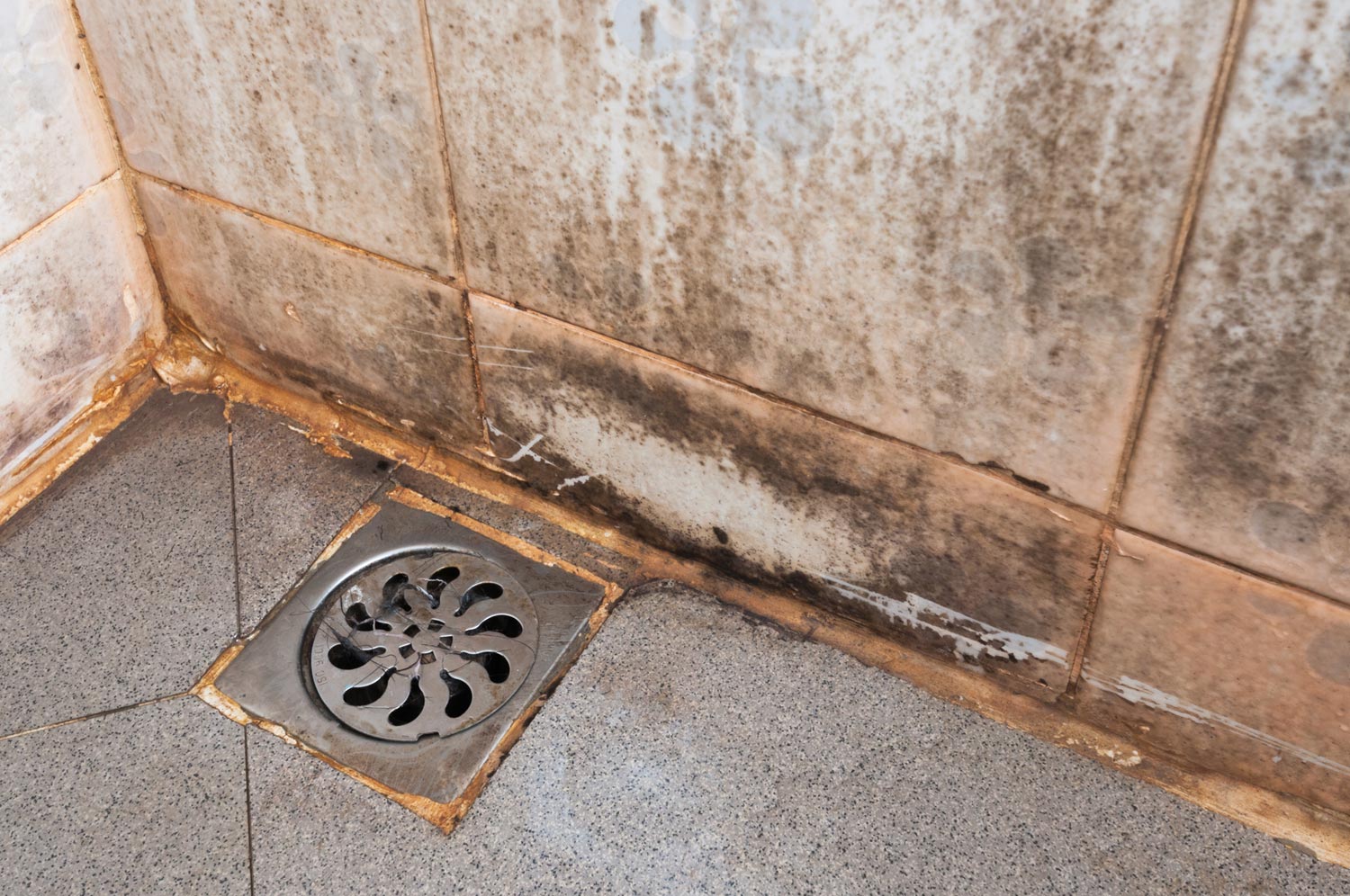Mold can live almost anywhere in your home. If it can get wet, is prone to high humidity or is hidden from view, toxic mold may be lurking. Mold is most commonly found on porous materials, such as wood, drywall, ceilings, paneling, and leather fixtures and furniture.
How do you know it’s mold – besides the visual signs? Smelling musty odors may be the first sign. Be aware of any increased allergy symptoms that you only experience inside your home or garage. Also, there are other major health affects such as asthma, chronic headaches and skin rashes to monitor.
1. Bathroom and shower
With a lot of excess water, bathrooms are a breeding ground for toxic black mold. You can easily see it on shower wall tiles but it’s the mold that you cannot see that is the most dangerous, such as under the tile or floors. Examine the ceiling too and look for obvious signs of moisture damage. Humidity is the main culprit here. Hot vapor and water evaporates into the air, which increases humidity. For this reason, it’s wise to have a proper exhaust fan and run it for 30 minutes after a shower.
2. Attics
When the temperature is between 40-90 degrees Fahrenheit, the risk for dangerous mold is heightened in attics. Some molds that affect mostly northern climates can grow in temperatures as low as 20 degrees. Cladosporium is a black mold found often on damp attic ceiling sheathings. Aspergillus is usually found in poorly ventilated attics on ceiling joists. HVAC systems that are over-sweating and roof leaks are major causes of toxic mold growth. Warning: If you see black spots on fiberglass insulation, there’s a 90% chance that it’s mold.
In many older homes, exhaust fans exhaust into the attic causing all of that moisture and humidity to be trapped in the attic. If you find this to be the case, this is very dangerous and should call JMC immediately to properly install new ventilation.
3. Kitchens
Due to leaks or other major plumbing problems under the sink and dishwasher, mold can easily go undetected. If cabinet or drywall looks to be warping, investigate further. Dangerous mold that is black or slimy green are the most dangerous.
4. Garages
Make sure your garage door is sealed to the floor. Mold can grow on the sheetrock and the contents of the garage. You can purchase a garage-door bottom seal kit at any major hardware store. PVC stop molding on the top and sides of door is essential as well.
5. Basements
Basements may be mold’s favorite place to hide in your home. Depending on the water table, water can seep into the foundation under the house. JMC recommends efficient dehumidifiers in basements. If the humidity is above 50%, it’s optimal climate for mold growth.
6. HVAC (heating, ventilating, and air conditioning system)
Once a month, check your HVAC or air system to look for moisture backup. The air system can help contaminate a house very quickly should mold spores spread through ventilation.
7. Crawl Space
We often find mold in other crawl spaces of a home, such as in subflooring. Plumbing leaks or improper ventilation is the main culprit. Unfortunately because mold spores can be as small as one micron in diameter, they can easily float to the living areas of a house. We find that even homes with foundation vents often cause more moisture buildup than they prevent.

